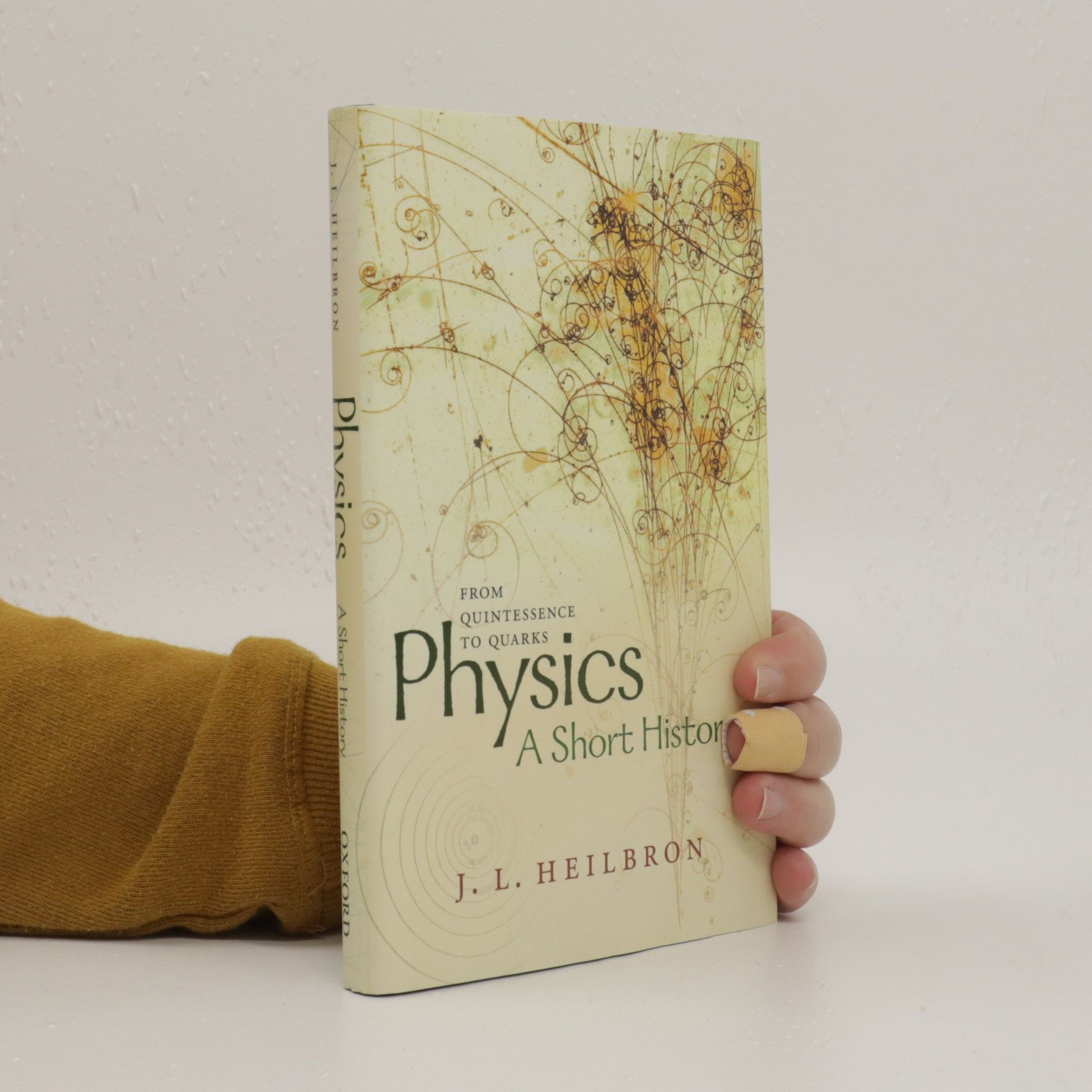J. L. Heilbron introduces Francesco Bianchini, reputed to be the greatest Italian of his time, whose life embodied the extraordinary meeting of science, culture, history, and politics in early modern Europe. From the Jacobite cause to Newton's theories to the zodiac, Heilbron paints a glorious portrait of a world of excitement and discovery.
John L. Heilbron Livres






The Sun in the Church
- 384pages
- 14 heures de lecture
Between 1650 and 1750, four Catholic churches were the best solar observatories in the world. 'The Sun and the Church' tells how these observatories came to be, how they worked and what they accomplished. schovat popis
The Ghost of Galileo
- 368pages
- 13 heures de lecture
Its appearance in a portrait of the young heir of Corfe Castle and his tutor forms the starting point for this lively, stylish rendering by historian John Heilbron of the intellectual life of early Stuart England. Deftly, he brings together connections between England and Italy in the time of James I and Charles I, religious and political machinations and conflicts, arguments about cosmological systems, art, and culture. Kings, courtiers, clerics, astronomers, and physicians; Van Dyck, Ben Jonson, Inigo Jones; a now almost forgotten artist; a young man's fashionable melancholy and travels-all figure in the backdrop to the painting. Together, they capture the intellectual and cultural landscape of the time, while explaining the presence of a ghost of Galileo in rural Dorset. Book jacket.
In this moving and eloquent portrait, Heilbron describes how the founder of quantum theory rose to the pinnacle of German science. He shows how Planck suffered morally and intellectually as his lifelong habit of service to his country and to physics was confronted by the realities of World War I and the brutalities of the Third Reich.
Galileo
- 528pages
- 19 heures de lecture
Galileo is aptly known as 'the father of modern science'. But there is much more to him than his well-known discoveries in physics and astronomy, and his infamous clash with the Catholic church. John Heilbron's wonderfully rounded new biography presents a multi-talented but difficult man - writer, philosopher, scientist, musician, and artist.
Physics : a short history from quintessence to quarks
- 228pages
- 8 heures de lecture
How does the physics we know today - a highly professionalised enterprise, inextricably linked to government and industry - link back to its origins as a liberal art in Ancient Greece? Heilbron's crisp and witty book tells the 2500-year story and highlights the implications for humankind's self-understanding.
Niels Bohr: A Very Short Introduction
- 144pages
- 6 heures de lecture
This book introduces the life and work of one of the most creative physicists of the 20th century. Niels Bohr, the pioneer of quantum theory, ranking with Einstein in importance for the development of modern physics, also had deep interests in philosophy, literature, and humanism. John Heilbron explores how these influenced his groundbreaking work.
The History of Physics: A Very Short Introduction
- 184pages
- 7 heures de lecture
Pick up a copy to get to grips with the 2500-year history of physics. Tushna Commissariat, Physics World
John L. Heilbron beschreibt in seiner Biographie, wie der Begründer der Quantentheorie zu einer Säule der deutschen Wirtschaft aufstieg. Max Planck, der immer seinem Land und der Physik dienen wollte, litt moralisch und intellektuell unter dem Ersten Weltkrieg und der Gewalt des Dritten Reichs. Er versuchte, eine „Arche“ zu bauen, in der Wissenschaft und und Wissenschaftler durch den Sturm des Nationalsozialismus kommen sollten. Dabei traf er schmerzliche Entscheidungen, die noch heute von Historikern und Wissenschaftlern diskutiert werden. Diese erörtert John L. Heilbron in seinem Nachwort für die 2. Auflage. Der zweite Teil des Buches enthält eine Auswahl der allgemeinverständlichen Schriften von Max Planck - Ansprachen, Gespräche und Artikel aus verschiedenen Zeitschriften und Büchern.